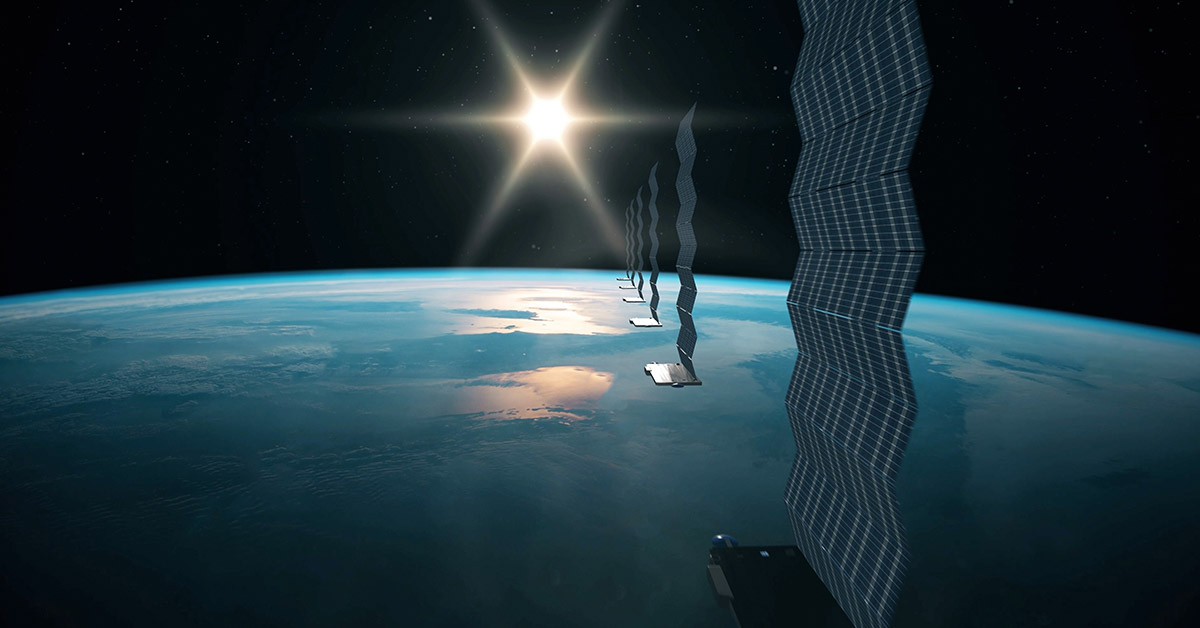A recent study conducted by Dr. Sierra Solter-Hunt, former NASA scientist, has raised some concerns. The focus of the study was on the potentially detrimental effects of mega satellite constellations, more specifically, the Starlink constellation from Elon Musk-owned SpaceX, on Earth’s magnetosphere. Dr. Solter-Hunt’s research shows that these constellations might be contributing to an accumulation of metal particles in orbit, which in time could distort or even trap Earth’s magnetic field.1 This slow but sure accumulation of metal debris, insignificant enough to go overlooked in previous studies, poses a serious threat to our planet’s protective shield against harmful cosmic radiation.
Too Much Starlink
“I was very surprised. No one has given much research to the accumulation of metal dust from the space industry,” Dr. Solter-Hunt expressed. She emphasized the potential consequences of this accumulation, likening it to a process called ‘atmospheric stripping’, which has been observed on Mars and Mercury. We don’t want to end up like Mars or Mercury, so we should probably take this seriously. With Starlink already having more than 5,500 satellites in orbit with plans to launch thousands more, it’s easy to see how the scale of this issue is considerable.
The study highlights how much and how fast Starlink satellites are contributing to space debris, with estimates suggesting over 1.3 tons of debris being burned in Earth’s atmosphere every hour.2 This debris slowly forms a layer of what’s called a “conductive particulate” in orbit. This particulate can potentially disrupt the magnetic field of a planet (our planet), making us vulnerable to cosmic radiation.
Dr. Solter-Hunt’s concerns look to the future, with projections indicating a potential increase to over 100,000 satellites in orbit over the next decade or so. Her study warns that having that many satellites would have grave consequences, stating, “By the time we get to 100,000 I think it could be too late”.
The weight of the metal debris already in orbit far surpasses the magnetically charged particles that shield Earth, so we may already be on borrowed time.
Read More: Here’s Where Elon Musk’s Tesla He Shot Into Space Is Now
What To Do
This study rightfully raises significant concerns about Starlink and the integrity of Earth’s ability to protect itself from harmful cosmic rays. Dr. Solter-Hunt stresses the urgent need to address this issue, stating, “I think we need to stop using the ionosphere and atmosphere as a space industry trash bin immediately”.
The concerns aren’t raised by Dr. Solter-Hunt alone, either. Other experts and astronomers have voiced similar views. Legal objections have been filed with the US Federal Communications Commission (FCC) by academic astronomers and some satellite companies that rival Starlink. These concerns are more about the potential disruption a surplus of satellites would have on ground-based observatories and the future of space research, but the logic still runs true.
The proliferation of satellite constellations, especially when it comes to Starlink, raises major concerns about the integrity of Earth’s magnetosphere and its ability to control exposure from any deadly cosmic rays. Action is needed now to address the still-growing issue of space debris accumulation so we can safeguard the planet from adverse atmospheric disruption. Action needs to happen swiftly before it’s too late.
Read More: Elon Musk Wonders Whether TikTok Is Destroying Civilization
Sources
- “Elon Musk’s Starlink Could Erode Earth’s Magnetosphere, Warns Ex-NASA Scientist.” Mashable. Harsh Vardhan April 19, 2024.
- “Cheap Satellites Like SpaceX’s Starlink Could Disrupt Earth’s Magnetosphere and Expose Us to Deadly Cosmic Rays, Ex-NASA Physicist Warns.” Science Times. Caleb White. April 19, 2024

